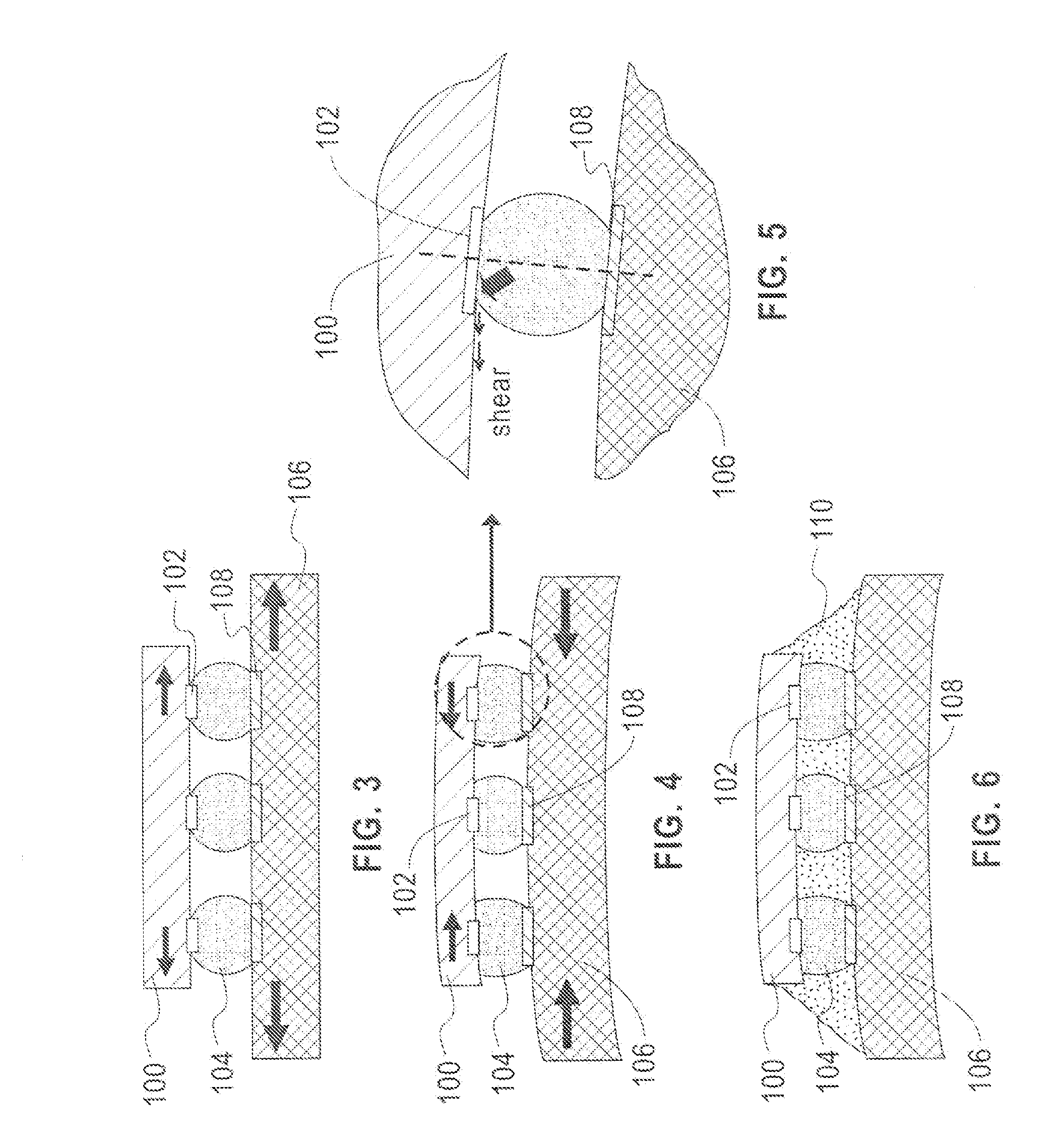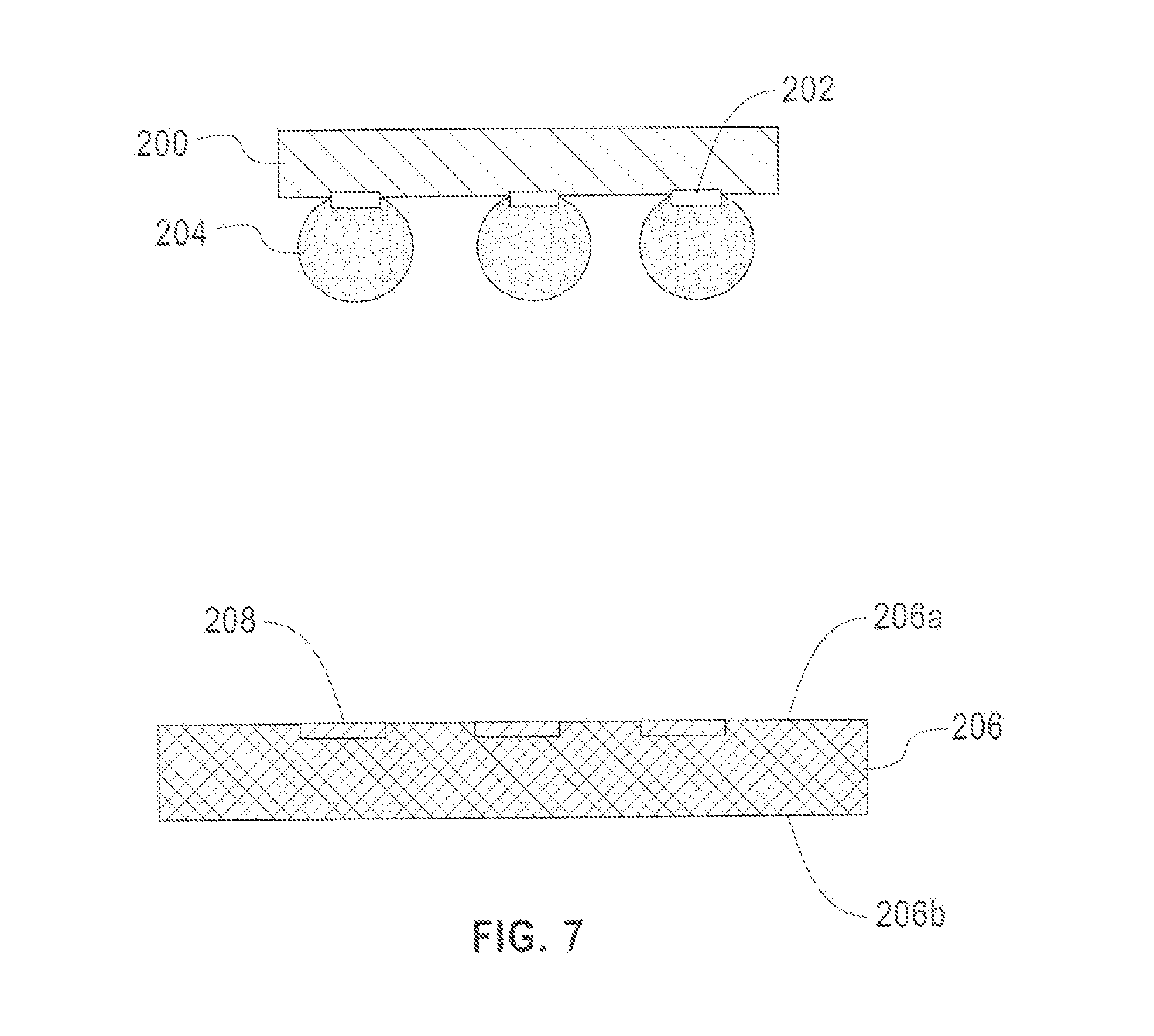Method of joining a chip on a substrate
a technology of chip and substrate, applied in the direction of soldering apparatus, manufacturing tools, auxiliaries welding devices, etc., can solve the problems of substrate bending and warpage, failure of beol structure, and increasing the number of failures, so as to reduce or prevent bending and warping of substrates and chips, the effect of reducing or preventing bending and warping
- Summary
- Abstract
- Description
- Claims
- Application Information
AI Technical Summary
Benefits of technology
Problems solved by technology
Method used
Image
Examples
Embodiment Construction
[0061]According to a preferred embodiment, a chip 200 and a substrate 206 are assembled by a flip chip assembly process. As shown in FIG. 7, the chip 200, which may be a silicon chip, includes a plurality of bump limiting metallurgy contacts (BLM) 202 formed or placed on a surface of the chip 200. The BLM 202 typically correspond to I / Os of the chip 200. A bump 204, such as a solder bump, is disposed on each BLM 202. A substrate, such as an organic substrate 206, includes a top surface 206a and a bottom surface 206b. The substrate 206 includes four lateral edges 206c, 206d, 206e, 206f, as shown in FIGS. 8 and 9. The substrate 206 includes a plurality of conductive pads 208 disposed along the top surface 206a of the substrate 206. The bumps 204 can be applied by any means, for example by evaporation, electroplating, direct placement (ball drop), IMS (C4NP), and the like.
[0062]The substrate 206 is positioned on a carrier 210 so that the bottom surface 206b of the substrate 206 contact...
PUM
| Property | Measurement | Unit |
|---|---|---|
| melting points | aaaaa | aaaaa |
| melting point | aaaaa | aaaaa |
| pressure | aaaaa | aaaaa |
Abstract
Description
Claims
Application Information
 Login to View More
Login to View More - R&D
- Intellectual Property
- Life Sciences
- Materials
- Tech Scout
- Unparalleled Data Quality
- Higher Quality Content
- 60% Fewer Hallucinations
Browse by: Latest US Patents, China's latest patents, Technical Efficacy Thesaurus, Application Domain, Technology Topic, Popular Technical Reports.
© 2025 PatSnap. All rights reserved.Legal|Privacy policy|Modern Slavery Act Transparency Statement|Sitemap|About US| Contact US: help@patsnap.com



